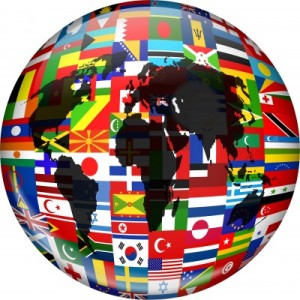 The open-air thermometer was invented by Galileo Galilei, c.1607. Match these improvements to their country and year of discovery.
The open-air thermometer was invented by Galileo Galilei, c.1607. Match these improvements to their country and year of discovery.
-
A. The clinical thermometer, by Santorio Santorio 1. Germany, 1714 B. Absolute-temperature (or Kelvin) scale, by William Thomson, Lord Kelvin 2. Sweden, 1742 C. The mercury (also called the Fahrenheit) scale, by Gabriel D. Fahrenheit 3. England, 1848 D. The centigrade scale, by Anders Celsius 4. Italy, c.1612
-
- True or false: The parachute, hot-air balloon, and airplane were all invented in France.
- Belgian inventor Leo Hendrik Baekeland (1863-1944) was a pioneer in the plastics industry. True or false: He named his breakthrough substance Orlon.
- Alfred Nobel of Sweden (1833-1896) left the bulk of his fortune to establish the Nobel Prizes, which are awarded each year in the categories of medicine, physics, literature, chemistry, peace, and economics. Nobel made his fortune inventing and marketing:
- A. Pneumatic tires
- B. Dynamite
- C. Hydrofoils
- Dutch naturalist Anton van Leeuwenhoek (1632-1723) reported his observations of microscopic animalcules in a series of letters to the Royal Society of London. True or false: van Leeuwenhoek constructed only one microscope.
- Luis F. Leloir's discovery of sugar nucleotides won him the 1970 Nobel Prize for chemistry. He is a citizen of which South American country?
- A. Argentina
- B. Brazil
- C. Chile
- D. Peru
- The 1965 Nobel Prize for physics was jointly awarded to scientists from Japan (Shinichiro Tomanaga) and the USA (Julian Schwinger and Richard P. Feynman). Their Nobel Prize was awarded for work in which field?
- A. Nanotechnology
- B. Quantum electrodynamics
- C. Education
- Many Italian scientists came to the United States to work, except for which of the following. (Hint: He's the only one who didn't win a Nobel Prize.)
- A. Enrico Fermi (1901-1954), nuclear physics
- B. Guglielmo Marconi (1874-1937), telegraphy
- C. Giulio Natta (1903-), polymer chemistry
- D. Alessandro Volta (1745-1827), electricity
- Which specialists work in Hawaii?
- A. Astronomers
- B. Botanists
- C. Volcanologists
- D. All of the above
- Two scientists from Canada, Sir Frederick Banting and John J.R. Macleod won the 1923 Nobel Prize for medicine. True or false: They are credited with discovering insulin.
Answers
- A, 4; B, 3; C, 1; D, 2
- False. The airplane's invention is generally credited to the Wright brothers, who first flew an engine-powered craft near Kitty Hawk, North Carolina, in 1903. In 1783, the first successful parachute descent was made by Louis S. Lenormand, and the hot-air balloon invented by Joseph and Jacques Montgolfier in France.
- False. Baekeland's revolutionary thermosetting resin was named Bakelite. He moved from Belgium to the USA in 1889, where he founded the Bakelite Corporation. He is also credited with major innovations in photography, which were purchased by Eastman Kodak Company in 1899.
- B. Nobel named his new explosive dynamite and patented it in 1867.
- False. Constantly tinkering with his instruments, van Leeuwenhoek built as many as 550 different microscopes. Only nine of these are known to have survived.
- A
- B
- D
- D. It should come as no surprise that scientists study Hawaii's rare fauna and volcanoes, but there is also an astronomical observatory atop Mauna Kea on Hawaii, and NASA has a tracking station at Kokee on Kauai.
- True
